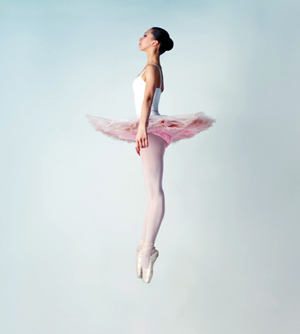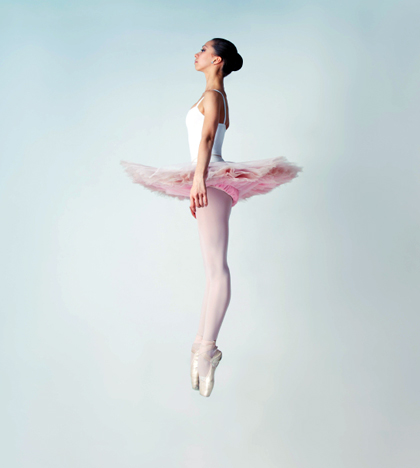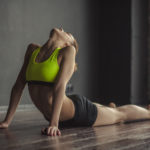Stand Tall: Body Alignment Tips for Dancers
 Mastering the art of proper body alignment during dance can be the key that unlocks your door to better balance, perfect pirouettes, higher battements, and overall freedom of movement.
Mastering the art of proper body alignment during dance can be the key that unlocks your door to better balance, perfect pirouettes, higher battements, and overall freedom of movement.
Dancers work on the perfect dance posture from day one in the dance studio. And while it may seem like a concept as simple as keeping your back straight and chin lifted, a lot of complex actions must take place at the same time to produce the optimal dancers’ stance.
Posture at the Core
We’ve all heard corrections in class like: “Flatten your back,” “Pull up your knees,” “Relax your shoulders,” “Connect your belly button to your spine,” “Don’t sick out your bum,” “Lift your chin,” and the list goes on. While these corrections all hold merit, having an understanding of the full concept of body alignment for dance helps demystify some of these corrections that are sometimes difficult to visualize and perform all at once, while still remembering to breathe.
As noted in the book “Inside Ballet Technique: Separating Anatomical Fact from Fiction” by Valerie Grieg, “The key to good posture is the correct alignment of the spine. The body masses of the skeleton – head, rib cage, and pelvis – are stacked vertically, like building blocks, over their base, the legs and feet. This balanced position, with the shoulder girdle hanging easily on top of the rib cage, causes the line of gravity – the imaginary vertical line that exactly bisects the weight of the body – to fall through the center of the structure.”
This line of gravity when viewed from the side passes from the top of the head at a point just behind the ear, through the centers of the shoulder, the rib cage, the pelvis and hip joints, down through the knee joint, and on to the foot in front of the ankle. When standing in a neutral position with these body parts aligned, important muscle groups are free to perform their main tasks of moving the bones without added tension or stress.
In dance class, opportunities for postural error often arise as dancers are told to “pull up” without being told exactly what that means. Yet, Grieg reminds us in her book, a simple scientific concept lies behind the technique of classical ballet. “The pull-up is a lengthening of the spine from coccyx to atlas. If the action is performed correctly, muscles pulling up the knees and the front of the pelvis (quadriceps and abdominals) are involuntarily engaged. The pelvis must be held in its correct vertical position with the hip crests lifted in front and the sacrum directed firmly downward. There should be no hint of “tucking” – on the contrary, the buttocks are held high on top of the legs. The spine is then gently lengthened without disturbing the alignment of the body.”
Visualizing Posture through Imagery
That may sound like an excellent description of good dance posture. But how do you achieve it? Using imagery while practicing your technique at the barre, or even sitting in your chair, will help engage the proper muscles without unnecessary tension or misalignment. Here are a few exercises to try that will help elongate the spine, and elevate the head with a neutral pelvis.
“See the spinal column as an ever-expanding silver rod, traveling up to the ceiling and down into the floor.”
“Pretend you are hanging from the ceiling and your feet are reaching for the floor.”
“Imagine the base of your spine is an anchor and you have a bunch of balloons tied to the top of your head. Now see the balloons drifting upward and slightly forward.”
* From “Inside Ballet Technique” by Valerie Grieg
Imagine the spine as a chain of spheres/pearls:
“Releasing pearls: Imagine the spine to be a string of pearls fastened by a knot at the bottom end. Visualize the knot opening and the pearls sliding off the string. As the pearls drop, watch the space between adjacent pearls widen.”
Imagine the head as a balloon:
“Sitting, standing: Imagine the head to be a balloon filled with helium. Remember that it is the helium that provides the lift (the space within the head); the surface of the balloon rests on the helium inside it. The neck and central axis are the string attached to the balloon that follows it as it floats upward. Imagine this string to be as soft as wool, especially in the neck area. From the balloon’s vantage point, the shoulders recede rapidly; much like the earth recedes to an astronaut as he catapults into the sky.”
*From “Dynamic Alignment through Imagery” by Eric Franklin
Do you have any tips or exercises on body alignment for dancers? Leave a comment to share them here!



